Today we’re going to talk about actual psychological principle’s and how they can be used to make your ex miss you.
Now, for those of you who are familiar with the way I write I always spend a long time researching and mapping out what I’m going to say. This one was unique because I wanted to do something a little different.
I’ve written in the past about how to make an ex miss you but if we are being honest the advice there actually isn’t themed around psychology. The advice here is. Every single thing I’ll be talking about today comes from psychology.
Overall there are ten main things I want to talk about,
- The Scarcity Principle
- The No Contact Rule (But Now How You Think)
- The Subtle Jealousy Posts
- The Zeigarnik Effect
- Understanding Your Ex Via Attachment Styles
- Cognitive Dissonance
- Social Comparison Theory
- The Contrast Effect
- Mirror Neurons
- Idealization
Let’s get this party started.

What Are Your Chances of Getting Your Ex Boyfriend Back?
Take the quizScarcity Principle:
Let’s start with the scarcity principle.
We, as human beings, tend to value things when they become more scarce. I guess the argument many people make is that by reducing contact and presence after a breakup with your ex, you become scarcer and can potentially increase your perceived value.
But I actually believe that scarcity can manifest in two ways.
- There’s the strategy of the no-contact rule, which we’ll discuss shortly.
- Then there’s the idea of having them experience a period of nostalgic reverie post-breakup, leading them to realize that either being with another person or being alone wasn’t as fulfilling as they anticipated.
At the heart of every breakup is the belief from one or both parties that they can do better than the other.
So, in essence, the “grass is greener” syndrome is always at play in some manner.
What often makes people miss their exes and regret their decision to break up or leave is realizing that the grass wasn’t actually greener on the other side. Scarcity is one way to make an ex come to this realization because they recognize that there’s only one of you, and the feelings they had with you were so unique that they can’t replicate them with others.
So, making yourself scarcer by reducing contact and giving them space to hit this nostalgic phase, where they start comparing (which we’ll delve into shortly), can enhance the chances of them missing you.
The No Contact Rule (But Not How You Think)
Then, of course, there’s the no contact rule, but not in the way most think.
Often, people fall into the trap of the reactance aspect of no contact. After all, it is one of the core ways no contact “works.”
Reactance is a psychological principle stating that humans have behavioral freedoms. When one of these freedoms is taken away, the individual is more likely to act to regain that freedom.
The logic behind the no contact rule is that after a breakup, you employ this rule on your ex, supposedly increasing the odds of them missing you by removing their freedom to communicate with you.
However, my research suggests the opposite.
It’s not that they don’t miss you; it’s that many exes we’ve studied exhibit dismissive avoidant tendencies. As a result, they won’t outwardly show they miss you since much of their turmoil is internal.
Our findings indicate that around 62 to 64% of exes subjected to the no contact rule won’t reach out during that period. The true power of no contact lies in how you spend the time away from your ex.
This is why I’ve updated the official definition of the no contact rule on “Ex Boyfriend Recovery,” this very website, to emphasize that the primary goal is for you to outgrow your ex.

What Are Your Chances of Getting Your Ex Boyfriend Back?
Take the quizTo illustrate, I came across a post in our community yesterday.
The member wrote,
“Hey, it’s been a while. Chris, you were right. When you decide you’re done and start seeing results, they come back. Did I outgrow him? No, but I outgrew who I was. Last week, I resumed training, attended events, focused on my career and mental health, and then received unexpected long texts from him. Chris once mentioned in a live stream to ignore when they refer to you as a ‘friend.’ I’ve been doing that. His actions show he feels differently. He’s introverted, so I don’t initiate calls or force anything. I no longer take his brief replies personally. Am I pleased he reached out? Yes. But I’m just letting things flow. These past 10 months have been tough, but this community has been my anchor. It taught me to save myself.”
This captures the essence of the no contact rule: evolving beyond your past self. By focusing on personal growth, you inadvertently make yourself scarcer and more valuable, echoing the scarcity principle.
The Subtle Jealousy Posts
Then, of course, there are the subtle jealousy posts.
In our community—and I assure you this isn’t a pitch for the community—we have a designated section called “Essential Breakup Resources.”
This section offers a plethora of valuable content:
- A Quick Start Guide
- Strategies for when your ex moves on
- Guidance on the no contact rule
- Insights on how attachment styles can aid in reconciliation
- Advice on managing social media during a breakup
- A texting guide
- We also provide downloadable resources like a habit tracker
- The Trinity guide
- Examples of successful first texts
- And usable jealousy texts.
These usable jealousy texts are particularly intriguing.
They’re a compilation of real text messages our clients have sent to their exes.
A common theme runs through these jealousy texts: they hint at the sender being on a date without explicitly showing it. It might be a subtle inclusion of someone’s arm in the photo or just showcasing the activity.
When it comes to inducing jealousy, many tend to go overboard, wanting to flaunt their new date to their ex.
However, I’ve found that subtle jealousy is far more effective. It’s about positioning yourself in a way that suggests you’ve moved on, letting your ex connect the dots without spelling it out for them.
The Zeigarnik Effect
Now, let’s explore the Zeigarnik effect, one of my favorite psychological concepts.
It posits that humans recall unfinished or interrupted tasks more vividly than completed ones.
For instance, imagine I knock on your door, and you invite me in for a house tour without closing the door behind us. As you guide me through your home, your mind is preoccupied with the open door. The longer it remains open, the more your anxiety amplifies, leading to irrational fears.
This exemplifies the Zeigarnik effect: the presence of an unresolved issue or “open loop” dominates our thoughts.
This concept is particularly relevant when engaging in post-breakup conversations with an ex. I often emphasize to my clients that the crux of a conversation isn’t about who initiates it, but rather who concludes it and how it’s concluded.
Ideally, you’d aim to have a delightful conversation with your ex, identify its zenith, and gracefully exit at that point.
The abrupt or unexpected end to the conversation, thanks to the Zeigarnik effect, makes it more likely for the ex to initiate another conversation in the future.
Repeating this pattern can create a domino effect, building momentum and potentially leading them to miss you.

What Are Your Chances of Getting Your Ex Boyfriend Back?
Take the quizMake Decisions Based On Attachment Styles
The next topic I’d like to delve into is making decisions based on attachment styles. If there’s one takeaway from this entire psychology discussion, it should be this section. Understanding attachment styles, especially in the context of breakups and post-breakup behavior, is crucial.
While I can offer a brief overview, it won’t compare to dedicating hours to research and investing in the right literature.
However, for our current discussion, recognizing your ex’s attachment style can be transformative. It allows you to communicate in their “attachment style language.” We’re familiar with the concept of the five love languages, but I propose there’s also an “attachment style language.”
Generally, there are three types of insecure attachments:
- Anxious Attachment Style: Individuals with this style exhibit anxious behavior when their core fear—abandonment—is triggered. When they sense abandonment, they tend to panic.
- Dismissive Avoidant Attachment Style: These individuals highly value their independence. When they feel it’s threatened, they might avoid situations, dodge confrontations, or even vanish.
- Fearful Avoidant Attachment Style: This style combines the core fears of both anxious and avoidant individuals.
If your goal is to make an ex miss you, identifying their attachment style should be your first step.
Our research indicates that most clients aim to reconcile with exes who predominantly have dismissive avoidant or fearful avoidant attachment styles, with the former being more common.
This suggests that grand gestures post-breakup might not be effective.
Instead, giving them space to reflect alone can be more impactful. It might sound counterintuitive, but if a dismissive avoidant values independence, granting them that space can create an environment where they feel safe enough to miss you.
One of my most-watched YouTube videos discusses how to make an avoidant ex miss you.
The key takeaway is that if you genuinely give your ex space and convey that you’ve moved on, a dismissive avoidant might lower their defenses, reminisce about the good times, and start missing you. Interestingly, dismissive avoidants often yearn from a distance.
They prefer low-pressure relationships where they can idealize you without immediate commitment. Understanding and catering to this preference can increase the likelihood of them missing you.
Cognitive Dissonance:
Alright, let’s delve into cognitive dissonance.
What exactly is it?
Cognitive dissonance arises when there’s a conflict between one’s beliefs and actions, leading to discomfort. For instance, if your ex was convinced that parting ways was the right decision, yet they constantly find themselves reminiscing about you, this dissonance might amplify their longing for you.
Taking the dismissive avoidant attachment style as an example: understanding their need for space and providing it can pave the way for cognitive dissonance.
As they lower their guard and recall the cherished moments, they might experience feelings contrary to their initial post-breakup beliefs, leading them to miss you.
Social media plays a significant role in amplifying this phenomenon.
While cognitive dissonance has always existed, the omnipresence of social media has supercharged its effects.
Platforms like YouTube, Facebook, and Instagram are engineered to capture and retain your attention.

What Are Your Chances of Getting Your Ex Boyfriend Back?
Take the quizTheir algorithms prioritize content that keeps users engaged. So, if someone is frequently checking an ex’s profile post-breakup, these platforms will continually highlight updates from that ex.
This constant exposure can intensify the cognitive dissonance, especially if an ex has mentally committed to moving on.
Their actions, however, paint a different picture—constantly checking up on you. This disparity can sow seeds of confusion, leading to internal conflict, and ultimately, a longing for the past.
Social Comparison Theory:
Social Comparison Theory, proposed by psychologist Leon Festinger in 1954, posits that individuals have an inherent drive to evaluate themselves, often in comparison to others. This is because there’s no objective metric to evaluate certain aspects of our lives, like our abilities or our emotional states. In the absence of objective measures, we turn to comparing ourselves with others.
There are two primary types of social comparisons:
- Upward Comparisons: Comparing ourselves to someone we perceive as superior or better off in some way.
- Downward Comparisons: Comparing ourselves to someone we perceive as inferior or worse off.
Post-Breakup Dynamics and Social Comparison
After a breakup, it’s common for individuals to engage in both upward and downward social comparisons as a way to process the end of the relationship and understand their feelings.
- Upward Comparison Post-Breakup: If an individual sees their ex-partner thriving—whether that means seeing them happy in a new relationship, achieving personal goals, or simply appearing content and resilient—it can lead to feelings of inadequacy or regret. They might think, “Why are they doing so well while I’m still struggling?” or “Did they find happiness faster than I did?”
- Downward Comparison Post-Breakup: On the other hand, if an individual perceives that they are doing better than their ex, it can provide a sense of validation or relief. They might feel reassured thinking, “I made the right decision,” or “I’m better off without them.”
Implications of Upward Comparison for the Ex
When an ex perceives you as doing better post-breakup, several psychological processes might be at play:
- Nostalgia and Regret: Seeing you thrive can evoke memories of the good times shared, leading them to wonder if they made a mistake by letting the relationship end.
- Re-evaluation of Self-worth: If they’re not doing as well emotionally or in other life areas, they might question their self-worth and value, leading to feelings of inadequacy.
- Desire for Familiar Comfort: Witnessing your success might make them miss the security, comfort, and happiness they felt when they were with you. They might think, “If I were still with them, I’d be happier or more successful too.”
- Questioning the Breakup: If the breakup was initiated due to perceived incompatibilities or issues, seeing you thrive might make them question whether those reasons were valid or if they were too hasty in their decision.
- Seeking Affiliation: Humans have a natural desire to affiliate with successful or happy individuals. If you’re perceived as such, your ex might feel a pull towards you, not just out of romantic interest but also from a social standpoint.
Contrast Effect:
Next up is the contrast effect.
The contrast effect is a fascinating phenomenon.
Essentially, if your ex’s current life or subsequent relationships don’t measure up to the moments they shared with you, those memories with you can appear even more radiant in comparison.
I often touch upon this when discussing the “ungettable girl” or “ungettable guy” concept.
Early on, when I introduced this idea, I emphasized the role of comparisons. Often, individuals end relationships believing it’s the best choice at the moment.
However, the real test of whether the grass is greener on the other side comes when they enter a new relationship and move past its honeymoon phase. That’s the pivotal moment when they begin comparing their feelings from both relationships, embodying the essence of the contrast effect.
If their new relationship falls short of the bond they shared with you, they might start to question their decision, yearning for the moments spent with you.
This introspection often leads to a heightened focus on cherished memories and experiences.
Hedonic Adaptation
Hedonic adaptation is a psychological concept suggesting that individuals typically return to a consistent happiness level following positive or negative life events. Once the initial euphoria or anguish of the breakup subsides, underlying feelings of love and affection may re-emerge, leading to feelings of longing. Over time, as their emotional equilibrium stabilizes, they begin making these comparisons.
If their time with you stands out as superior to their current situation or relationship, that’s when nostalgia can set in, making them miss you.
Mirror Neurons:
Mirror neurons are a type of brain cell that responds equally when we perform an action and when we witness someone else perform the same action. Discovered in the 1990s in the brains of monkeys, these neurons play a crucial role in understanding and empathizing with others. They are thought to be the neurological basis for social cognition, allowing us to “mirror” or replicate the emotional states and actions of others in our own minds.
For example, when we see someone smile, not only do the visual centers of our brain activate, but so do the areas of the brain responsible for producing a smile. This mirroring process helps us understand and connect with the emotions of others.
Implications of Mirror Neurons in Relationships
- Empathy and Connection: Mirror neurons are believed to be the foundation of empathy. In relationships, they allow partners to feel and understand each other’s emotions deeply. When one partner is sad or joyful, the other can “feel” it too, leading to a deeper emotional connection.
- Shared Experiences: Activities and experiences shared between partners can create strong neural pathways associated with those memories. Witnessing or even thinking about those shared activities can activate mirror neurons, evoking the emotions felt during those times.
- Mimicry and Bonding: Couples often unconsciously mimic each other’s gestures, postures, and speech patterns. This mimicry, driven by mirror neurons, can enhance bonding and feelings of closeness.
Post-Breakup Dynamics and Mirror Neurons
After a breakup, the activation of mirror neurons can have several effects:
- Nostalgia and Longing: If your ex sees or hears about activities you both used to enjoy together, their mirror neurons might fire, making them relive those moments mentally. This can lead to feelings of nostalgia and a longing for the past.
- Physical Reactions: Witnessing actions or emotions that were commonly shared can lead to physical reactions. For instance, if a song you both loved plays, it might not just evoke memories but also physical sensations like goosebumps or a lump in the throat.
- Amplified Emotions: The activation of mirror neurons can amplify emotions. If your ex sees you expressing happiness or sadness, their mirror neurons might make them feel those emotions more intensely, leading to heightened feelings of missing you or wanting to reconnect.
- Re-evaluation of the Relationship: Mirror neurons can make individuals reflect on the emotional depth and connection they had in the relationship. They might wonder if such a connection is worth rekindling or if they can find it with someone else.
Idealization:
Lastly, we delve into the concept of idealization.
As time progresses, negative memories tend to diminish, while positive ones often become amplified. This can lead to an idealized recollection of a relationship, causing them to reminisce about the happier moments.
A concept that springs to mind in this context is the peak-end rule.
This rule elucidates how humans process memories. Given the limited storage capacity of our brains, it evaluates memories based on two distinct points: peak moments and end moments. In the aftermath of a breakup, the immediate recollection is often the breakup experience itself.
However, over time, research indicates that the impact of the relationship’s conclusion can be overshadowed by its peak moments. If these peak moments are revisited frequently, it can lead to feelings of longing.
However, it’s crucial to note that if you’re incessantly reaching out to your ex, not allowing them the space we discussed, especially in the context of dismissive avoidants, they might focus more on the end moments, reducing the chances of them missing you.
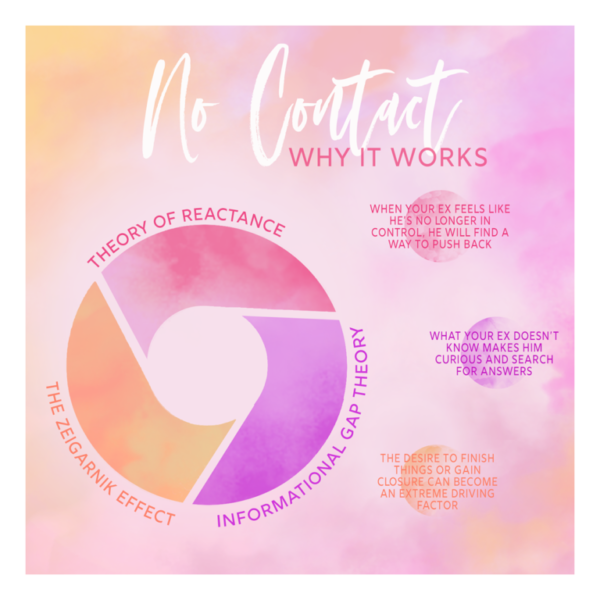
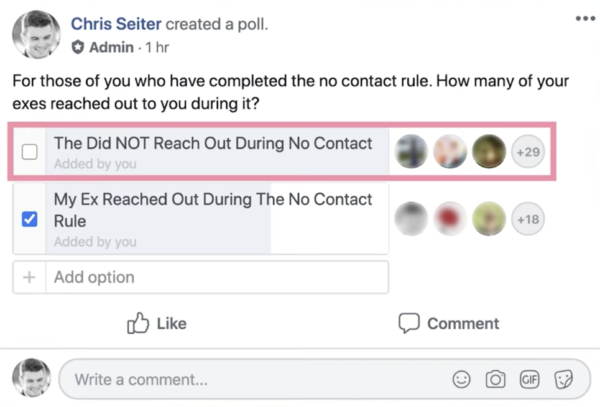
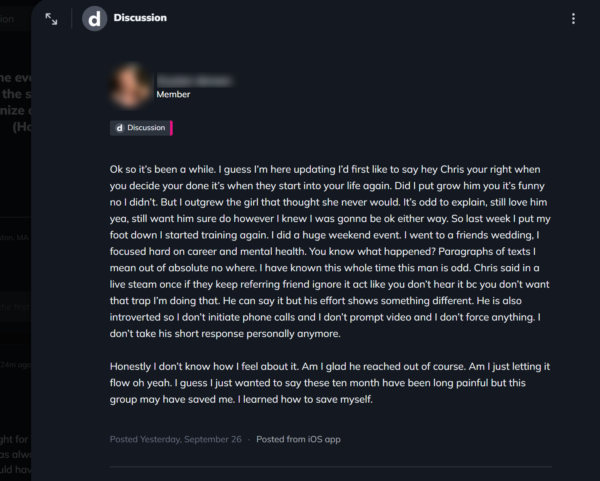
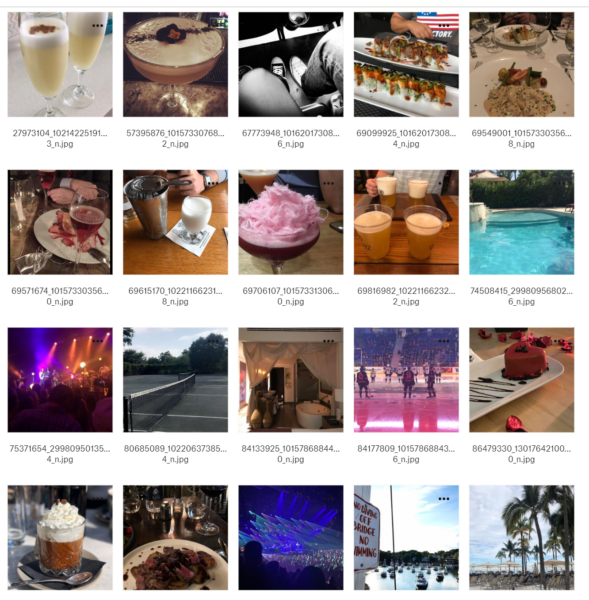
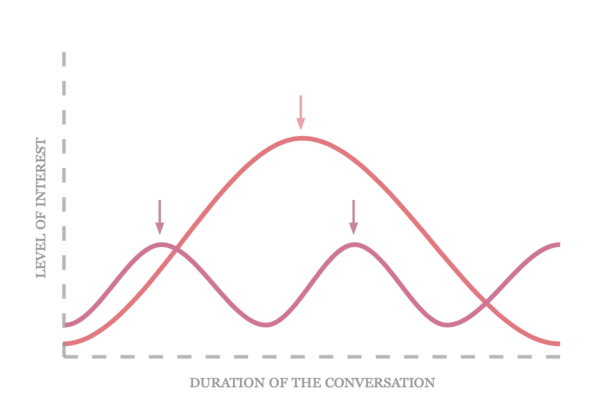
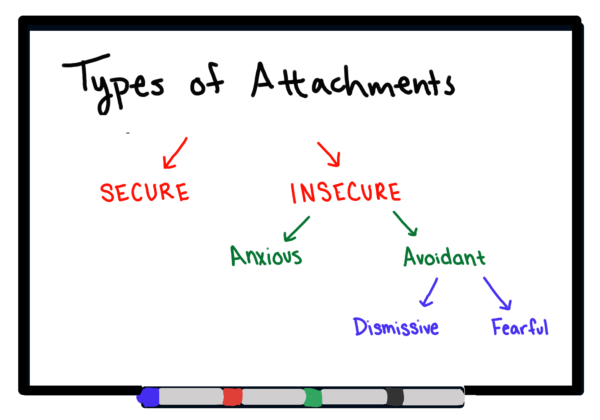
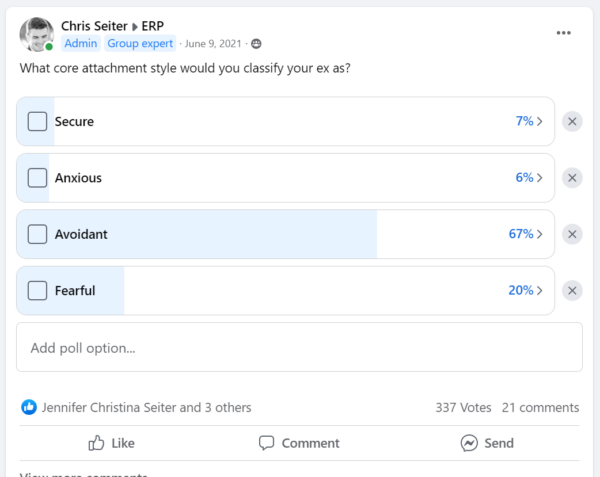

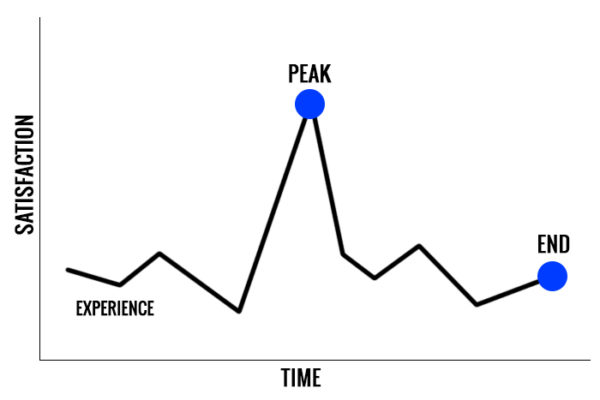
Tereza
November 8, 2024 at 6:04 pm
Does this apply even though I once drunkedly and by accident cheated (I know…I confessed straightaway but I know I messed up..) and he broke up with me? He’s been really cold and distant with me since